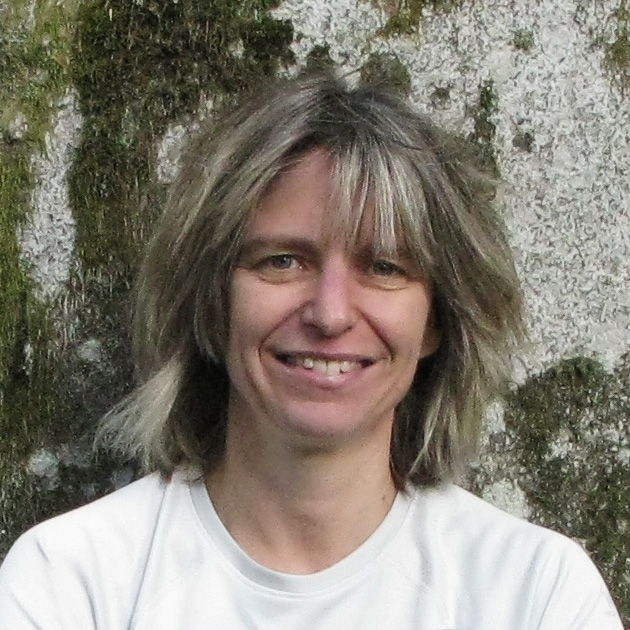與樹對話
生物學家、植物學家、生態學家、林務員和博物學家都相繼發表有關樹木的內在生活的研究論文。他們認為樹木會說話,而人類只要透過傾聽也可以學會聽到並聽懂這種樹的語言。
英屬哥倫比亞大學森林保育科學系森林生態教授蘇珊娜·西馬德(Suzanne Simard)是一位有名的植物學家。她的專長是研究地底下連結樹與樹之間溝通及互動的真菌網絡系統。她的團隊揭開了樹與樹之間溝通的密碼,他們證實樹會利用地底下的網絡系統來溝通。在這些複雜的共生網絡中,有著很像是我們中樞神經系統的母親樹(mother trees),及像我們周邊神經系統的子樹,它們之間有著相互溝通的社交網絡(neural and social networks.)。她在2016年TDKs Sperkers(一個可向世界發聲的談話網站)發表的《樹如何彼此對話》(How Trees Talk To Each Other(https://www.youtube.com/watch?v=yWOqeyPIVRo)的演說中指出, 在紙皮樺(學名:Betula albo-sinensis)和花旗松(學名:Pseudotsuga-menziesii)樹根下面 有很多白色的菌絲--它們構成了樹與樹之間的網絡系統。
Biologists, botanists, ecologists,
foresters, and naturalists have successively published research papers on the
inner life of trees. They believe that trees communicate, and humans can learn
to listen and understand this tree language by actively listening.
Suzanne Simard, a renowned botanist and
professor of Forest Ecology at the University of British Columbia, specializes
in researching the underground network of fungi connecting trees for
communication and interaction. Her team unveiled the code of communication
between trees, confirming that trees utilize an underground network for this
purpose. In these intricate mutualistic networks, there exist mother trees,
which are somewhat akin to our central nervous system, and the associated
trees, resembling our peripheral nervous system, establishing a network of
mutual communication, neural and social networks between them. In her 2016 talk
titled "How Trees Talk To Each Other," shared on TDKs Sperkers (a
public speaking platform), she highlighted that beneath the roots of trees such
as the Betula albo-sinensis (Silver Birch) and Pseudotsuga menziesii (Douglas
Fir), there exists a vast network of white mycelium, constituting the system of
communication between trees.

Suzanne Simard(https://e360.yale.edu/features/exploring_how_and_why_trees_talk_to_each_other)
她的團隊證明,樹木會透過這些菌絲,用碳,氮和磷等元素來溝通。 此外,她證明水中有一些化學激素也能協助樹之間資訊的傳達。在一片森林中,一棵母樹可以和 其它幾百棵樹建立聯繫。樹木之間不僅有競爭關係,同時也有合作關係。她的團隊成員設計了一個實驗,把母樹和它們的孩子、 以及一些陌生的幼苗種在一起。 事實證明母樹認識它們的孩子,它通過更大的菌絲網路 來覆蓋住自己孩子們所在的區域。
在地下,它們給孩子們會送去更多的碳。它們甚至會減少自己樹根的擴張,來為它們的孩子們創造更多的活動空間。當母樹受傷或即將枯死的時候,它們還會把它們的智慧傳給下一代。當它們感受到外在環境受到改變時,它們也會警告它們的小孩。這些研究人員使用同位素示蹤法來追蹤碳元素及防衛信號的走向。他們觀察一棵受傷的母樹的樹幹以及它的地下的真菌網路,再觀察它周圍的幼苗。他們發現母樹的碳元素及防衛信號可以被傳遞到這些幼苗身上,並增強這些幼苗的抵抗力,以及面對未來生存的抗壓性。 所以蘇珊娜·西馬德教授和她的團隊證明樹與樹是會溝通的,也就是說樹是會說話的。他們揭開了植物細胞的密碼。
Her team demonstrated that trees use these mycelia to communicate elements such as carbon, nitrogen, and phosphorus. Furthermore, she proved that certain chemical hormones in water assist in the transmission of information between trees. In a forest, a mother tree can connect with several hundred other trees. Trees don't just engage in competitive relationships with each other but also exhibit cooperative relationships. Her team designed an experiment by planting mother trees alongside their offspring and some unrelated seedlings. The results indicated that the mother tree recognized its offspring and extended its larger mycelial network to cover the area where its offspring were located.
Underground, they provided more carbon to their offspring and even reduced the expansion of their own roots to create more space for their offspring's activities. When a mother tree is injured or about to die, it passes its wisdom to the next generation. When they sense changes in the external environment, they also warn their offspring. These researchers used isotope tracing to track the movement of carbon elements and defense signals. They observed the trunk of an injured mother tree and its underground fungal network, and then observed the surrounding seedlings. They found that the carbon elements and defense signals of the mother tree could be transferred to these seedlings, enhancing their resilience and stress resistance for future survival. Therefore, Professor Suzanne Simard and her team proved that trees do communicate with each other, in other words, trees 'speak'. They uncovered the code of plant communication.
Peter Wohlleben, a German forest ranger and author, who possesses a rare understanding of the inner life of trees, in his book 'The Hidden Life of Trees: What They Feel, How They Communicate,' describes trees as superorganisms that are accessible and evoke emotions. He presents data showing that plants, apart from forming alliances with their own species, communicate with and establish alliances with other species. He believes that many forest trees have evolved to live and cooperate with other species using collective intelligence similar to insect colonies.
Although Mr. Huang lacks an academic background in botany, he has consistently studied the code of cells. During his body's disintegration and the subsequent practice rebuilding process, he continuously felt the miraculous power that different plants brought to him. He learned to communicate with and converse with trees. These trees repeatedly comforted Mr. Huang's injured body and mind. During his recovery, he was particularly struck by the profound effects of seven species: the first is the Sapium sebiferum, the second is the banyan tree, the third is the bodhi tree, the fourth is the massive root banyan tree of Sanxia, the fifth is the long-lived Hinoki cypress, the sixth is the ganoderma lucidum, and the seventh is the hericium erinaceus.









沒有留言:
張貼留言